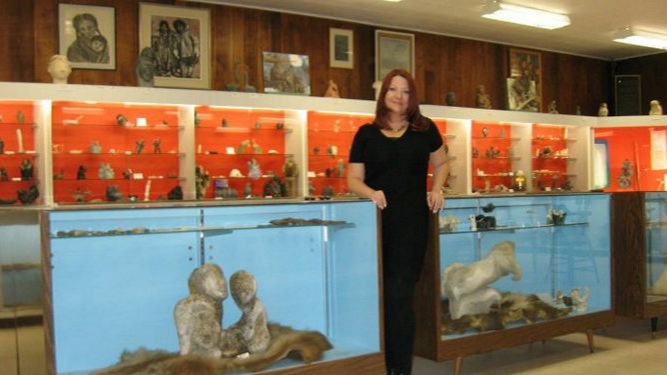Churchill, Manitoba, may be small, but it has one of the most amazing little museums you’ve ever seen! We took a tour and interviewed Paige Harms, the Assistant Curator of the Eskimo Museum, about the collection and her favorite piece.
1. What is the purpose of the Eskimo Museum and when did you open?
This museum originated in the early 1940’s, when Roman Catholic missionaries from the order of the Oblates of Mary Immaculate sought a way to preserve the culture of the people of the North through their remarkable carving skills. It is dedicated to advancing the knowledge, understanding and appreciation of Northern culture and history, with an emphasis on the Canadian Inuit. Originally a few pieces were displayed in a front room of the Bishop’s residence (next to the church). The exhibits were moved into their own building, here, in the early 1960’s. And the museum became an independent non-profit entity in the 90’s.
2. How many artifacts have you collected and where do they come from?
While there are approximately 4800 artifacts in the collection, the main focus of the exhibits are the 1100 Inuit art pieces displayed in 35 cases. The artifacts are a collection of items from all across the Arctic, but many come from the Central and Eastern regions of Northern Canada.
3. What is one of your favorite artifacts in the museum? (on video, we zoomed in on the one where the man sees the airplane for the first time).
I find ‘my favorite’ artifacts tend to change; each time I look at the collection, I am delighted to find a piece that strikes me in a new way. One of my first favorite carvings (from when I began working here) is an early representation of a family sighting their first airplane. This carving, made by Antonin Attark from Kugaaruk, Nunavut, beautifully depicts the astonished face of the man as he spots the airplane in the sky while building his igloo.
4. Anything else you’d like to say to people about the museum?
The museum receives visitors from all over the world every year; from interested tourists to relatives of the carvers and other artists from along the coast of Hudson Bay and farther North. We feel privileged to be able to share what we have collected and learned about this unique and captivating culture with all who visit us.



